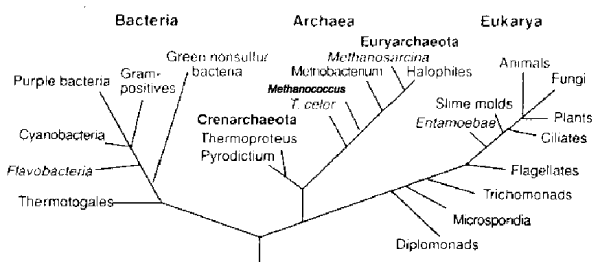 |
Science Frontiers ONLINE No. 112: Jul-Aug 1997 |
|
|
Archea: Tough And Different
Today's textbooks recognize only two main divisions of life: the prokaryotes (cells without nuclei) and eukaryotes (cells with nuclei). Humans and most of the life forms we are familiar with belong to the latter group. (Curiously, human red blood cells lack nuclei!) However, a third basic type of life has been found prospering in some extreme environments. These are the Archea, typified by the methane-producing microbes discovered clustered around hot deepsea vents, where temperatures may exceed 400�C. It is not their rugged constitutions that place these miniscule forms of life in a new category; it is their genomes. They are radically different from those found in prokaryotes and eukaryotes. The genome of one species of Archea collected from a hot vent 3 kilometers deep in the Pacific has been sequenced. Biologists were taken aback. Methanococcus jannaschii, as it has been dubbed, possesses 1738 genes, of which 56% are entirely new to science. Many of these genes do not look anything like those found in the prokaryotes and eukaryotes. In a word, they seem "alien."
(Morell, Virginia; "Life's Last Domain," Science, 273:1043, 1996.)
How alien? Well, they are so tough that they could have arrived from Mars on a meteorite. Millions of years of residence in a meteorite edging its way toward a rendezvous with earth mean nothing to the Archea. They have even been cultured from the interior of a salt crystal 200 million years old.
(Fanale, Fraser; "Martian Substances," Science, 275:321, 1997.)
